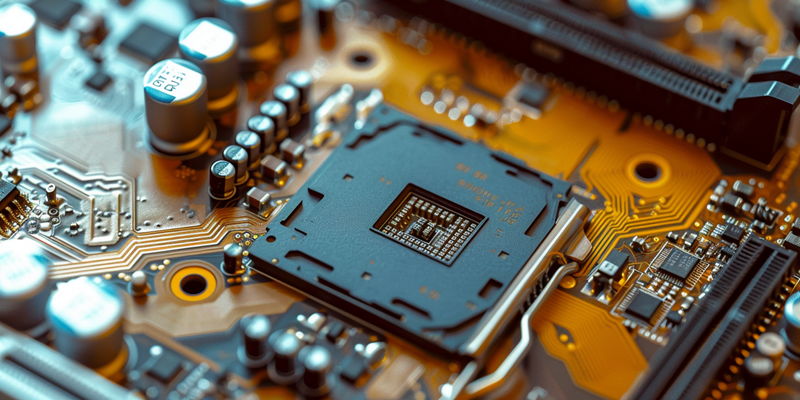The latest leak surrounding Intel’s upcoming Arrow Lake processors has spotlighted a mysterious yet powerful Intel Core Ultra 200 CPU, rumored to significantly outperform Intel’s current leading 14th-gen Core i9 processors in single-thread performance by an impressive margin of approximately 20%. According to alleged CPU-Z benchmarks, this unannounced chip achieved a single-thread score of 1,143, notably higher than the scores of the Core i9-14900KS and Core i9-14900K, which stand at 933 and 914, respectively. This leap suggests substantial improvements in single-threaded tasks, which are crucial for numerous consumer applications, especially in areas like gaming and software where single-core performance plays a pivotal role. However, despite these promising figures, the leak has also unveiled some concerns regarding multi-thread performance, suggesting the overall impact may be less revolutionary than initially anticipated.
Single-Thread Performance: A Game-Changer?
One of the most eye-catching aspects of the leak is the significant improvement in single-thread performance that Intel’s Arrow Lake processors appear to offer. This enhancement is a stark contrast to the minor increments seen in previous generational upgrades and has the potential to revolutionize user experience in high-demand single-threaded applications. For example, gamers who rely on peak single-core performance for seamless gameplay and quick response times stand to benefit immensely from this advancement. Similarly, software developers and users who utilize applications that are heavy on single-thread tasks will likely see notable improvements in their workflow efficiency.
Yet, the question remains whether this single-thread progress alone will be sufficient to establish Intel’s dominance in the highly competitive CPU market. In an era where multi-threaded performance is becoming increasingly vital for a broad range of computing tasks—from video editing to AI-driven workloads—the balance between single-thread and multi-thread capabilities is more critical than ever. Therefore, while the single-thread leap hints at exciting potential, it also underscores the necessity for a more nuanced perspective when evaluating the full spectrum of the Arrow Lake processors’ capabilities.
Multi-Thread Discrepancies Raise Questions
Contrary to the impressive single-thread performance, the Arrow Lake processor’s multi-thread scores have sparked some skepticism. In the leaked benchmarks, the processor scored 12,922 in multi-threaded tests, which falls short of the performance delivered by Intel’s current 14th-gen Core i9 processors and also lags behind certain high-end chips in AMD’s Ryzen 7000 series. This disparity raises questions about the overall improvement and whether the new processor might be more aligned with mid-range models, potentially equivalent to a Core i5 rather than a top-tier Core i9 alternative.
Such discrepancies highlight a critical point: while single-thread enhancements are technological marvels, they do not provide a complete picture of a processor’s performance, especially in an age where multi-thread prowess is increasingly indispensable. High-performance computing tasks often require robust multi-thread capabilities to handle complex, concurrent operations effectively. As such, the mixed performance metrics revealed in the leak suggest that Intel still has significant ground to cover to compete comprehensively with AMD’s upcoming offerings, particularly the Ryzen 9000 series slated for an earlier release in July 2024.
Future-Proofing with New Standards and Technologies
Aside from performance benchmarks, the leak sheds light on some of the Arrow Lake processor’s anticipated technical specifications, which suggest that Intel is steering its technology towards future readiness. One notable change is the expected discontinuation of DDR4 RAM support in favor of the latest DDR5 standards, which promises higher speeds and increased efficiency. Additionally, the Arrow Lake family will reportedly feature a total of 32 PCIe lanes dedicated to GPUs and NVMe SSDs, providing ample avenues for high-speed data transfer and storage options crucial for modern computing needs.
However, while these innovations signal a strong move towards cutting-edge technology, they also come with potential trade-offs. For instance, the lack of support for Thunderbolt 5 could limit connectivity options for users seeking the latest in high-speed peripherals, creating a nuanced set of pros and cons that consumers will need to weigh. Intel’s strategy seems to be aimed at balancing advanced capabilities with market demands, positioning their upcoming CPUs to be more aligned with future trends in performance and usability. Nevertheless, these decisions also highlight the competitive pressure on Intel to modernize its lineup while keeping user needs at the forefront.
Balancing Optimism and Skepticism
While the Arrow Lake processor excels in single-thread performance, its multi-thread scores in leaked benchmarks have raised doubts. The processor scored 12,922 in multi-thread tests, which is less than Intel’s current 14th-gen Core i9 processors and falls behind some high-end AMD Ryzen 7000 series chips. This discrepancy questions whether the new processor might be better suited for mid-range models, similar to a Core i5, rather than competing with top-tier Core i9 alternatives.
These differences underscore an important point: single-thread improvements are impressive, but they don’t tell the whole story of a processor’s capabilities, especially when multi-thread performance is vital. Modern computing tasks often need strong multi-thread capabilities to handle complex concurrent operations efficiently. Therefore, the mixed performance results from the leak indicate that Intel still has considerable work to do to compete fully with AMD’s forthcoming Ryzen 9000 series, which is expected to release earlier in July 2024. This suggests Intel’s Arrow Lake may not yet pose a significant challenge to AMD’s stronghold in high-end multi-thread performance.

